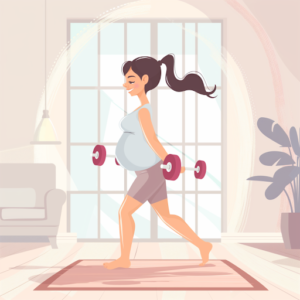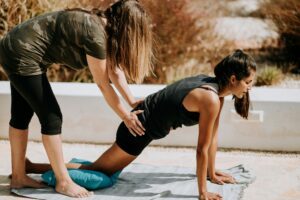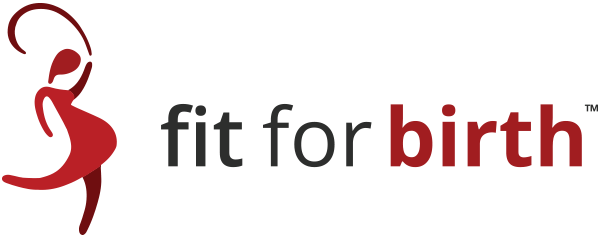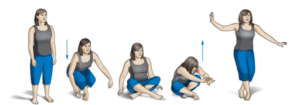Last updated: 6/13/24
Longevity principles – centered around optimizing health and wellness over the entire lifespan – are the same factors that make one healthy (or not) during the pre and postnatal timeframes. The lifestyle choices that create longevity are the same ones that cause the most profound epigenetic influences for our children, and our grandchildren.
Whether you want to be pregnant, already are, or even if you are finished having kids and just want to feel healthy enough to enjoy them (and also your grandkids one day) longevity health is the single most critical thing to know.

Longevity is not just lifespan (how long you live), but is also healthspan (how healthy you live).
For anyone who wishes to pass away peacefully in your own bed one day – rather than suffering a decade or more of chronic ailments and hospital visits before dying in misery, this article will simplify the longevity field for you, and give you clear direction for what you need to do right now to ensure health and vitality for your entire life.
This article will review “2-steps” for longevity:
- Get the most valuable TESTS
- Apply the most valuable foundational HABITS
How do Genetics & Epigenetics influence Longevity?
Before jumping into the tests & habits, we will take a moment to remind ourselves of genetics and epigenetics, since these form the basis of understanding longevity.
While genetics provides the baseline code, with certain genes associated with longer lifespans and resilience to age-related diseases, epigenetics involves changes that alter the chemistry around genes, effectively turning the genes ON or OFF.
There are genes for all kinds of things, including the predisposition and development of the four main categories of chronic diseases:
- Metabolic diseases
- CV (cardiovascular) diseases
- ND (neurodegenerative) diseases, and
- Cancer.
Of these, metabolic dysfunctions typically underlie the other three chronic diseases.
- For a deeper understanding of genetics, including some of the crazy ways that gene editing is already being used – from treating blindness to resurrecting woolly mammoths, as well as the probability of parents soon being able to select specific traits in their kids – check out our article titled, “Understanding Genetics: for Wellness Professionals.”
The fun part about epigenetics is that it is radically influenced by your lifestyle habits. Epigenetic mechanisms such as DNA methylation, histone modification, and RNA-associated silencing can switch genes on and off.
If genetics is like receiving the set of piano keys, epigenetics is the decision you have – every moment of every day – to decide which keys to play.

This epigenetic switching “on & off” of genes not only affects how cells age and how long they live, but also a ton of subtle biological processes like digestion, immunity, oxygen utilization, and disease protection. These “on & off” changes can be triggered by exercise, diet, sleep, stress, and exposure to toxins.
All this means is that there is a dynamic interplay between our genetic backdrop and our personal health choices that shape the health we give our babies, as well as how long we live and how well we age.
This evolving field of longevity holds promise for targeted interventions that dramatically affect our own health, and the health we pass to our children and grandkids.
- For a very short overview of the 5-steps of Epigenetics, see “What you need to know about Epigenetics if you’re Pregnant.”
- For a solid scientific understanding of how exercise triggers epigenetic chemistry changes around the DNA, see “5 Steps Of Epigenetics Of Exercise: For Fitness Professionals.”
- To understand how pregnant mothers who strength train may actually create more fit babies, along with specific examples in how exercise alters gene expression in offspring, see, “Epigenetic Phenomena in Pregnancy.”
What are the best longevity TESTS?
There is no way to predict all the right tests for each person, as your health is highly dependent upon your individual needs. However, there are a few tests that turn out to be critical for practically everyone, so that’s what we will present here.
Remember, we are trying to avoid the four main chronic diseases: Metabolic, CV, ND and Cancer. And of these four, it’s important to know that metabolic dysfunctions typically underlie the other three chronic diseases, which informs our starting points for both our tests and lifestyle habits.
The tests for ApoE, Lp(a), and ApoB are the very baseline initial ones to get. You’ll want to get your ApoB down as low as possible since that will affect your metabolic processes, as well as the growth rate of CV, ND and cancer. For the child, a healthy metabolic environment reduces the risk of developing metabolic syndromes and diabetes later in life.
Next is the world’s first comprehensive cancer test. Instead of one test for each of the main half-dozen most prevalent cancers, the Grail Galleri test will give you feedback on more than 50 cancers from just one blood draw!

Of these first four tests (ApoE, Lp(a), ApoB and Grail Galleri), two of them are considered one-time tests that you don’t need to repeat regularly (see chart below).
Finally, since exercise is “the most potent longevity ‘drug’ in our arsenal,”[1] there are 5 tests to help measure the progress of our fitness program. Of these, the DEXA and the VO2 Max can be respectively intense financially and physically, so we’ll show you three additional tests that you can do for low-or-no-cost on your own. Those low-or-no-cost strength-based tests are the Sitting-Rising, Dead-Hang, and Farmer’s Carry.

Note that your medical insurance may cover some of these, but not all of them. Start by asking your doctor. Try to convince them that you need these tests for medical reasons, so that it’s more likely that your insurance covers them. Some of these may not be advisable to do while pregnant; ask your doctor to be sure.
| Name of Test | What it’s for | Where to Get Tested |
| ApoE
-Insurance covered: sometimes -Direct to consumer: $100-600 Frequency: just once! |
Important for both CV & ND. This is a genetic test that shows how your body processes fats and cholesterol.
-E2 gene is protective -E4 multiplies risk for Alzheimer’s |
The test is usually done via a blood sample or a cheek swab. Ask your doctor, or use a direct to consumer lab or online genetic testing services. |
| Lp(a)
-Insurancecovered: sometimes -Direct to consumer: $50-200 Frequency: just once! |
Important for both CV (especially if you have a family history), as well as ND (in relation to vascular health & inflammation). Lp(a) is a measure of LDL with an Apo wrapping. You can have low ApoB but still have a dangerously elevated Lp(a). [2] | Blood test. Ask your doctor first. Otherwise, use other direct to consumer medical laboratories, like LabCorp & Quest Diagnostics. |
| ApoB
-Insurance covered: sometimes -Direct to Consumer: $50-200 Frequency: “regularly” to give feedback that the number is staying as low as possible. |
This is the primary causative agent in CV disease. ApoB tells us about the concentration of LDL particles (“far more predictive of CV disease than simply LDL-C, the standard ‘bad cholesterol’ measure”), as well as the concentration of VLDL particles. [3] | Blood test. Ask your doctor first. Otherwise, use other direct to consumer medical laboratories, like LabCorp & Quest Diagnostics. |
| Grail Galleri
Insurance covered: not yet (Summer, 2024) Direct to consumer: $949 Frequency: Yearly, to make sure that there are no signs of cancer |
Multi-cancer early detection test for more than 50 types of cancer.
Galleri looks for cell-free DNA, which can come from any size tumor, even ones that remain invisible to imaging tests like MRI & mammogram. |
One blood test for 50+ cancers! |
| DEXA
Insurance covered: sometimes Direct to consumer: $200-300 Frequency: Yearly, to verify how your fitness & nutrition program is progressing. |
Measures 3 important areas:
-Lean Muscle Mass is considered one of the primary longevity factors to keep as high as possible. -Bone Mineral Density (osteoporosis) should be high. -Visceral Fat % is even more important than overall body fat % for predicting heart disease. Keep this as low as possible. |
Places to get this done include: Your doctor’s referral, hospitals, medical imaging centers, orthopedic clinics, university medical centers, sports clinics, some fitness centers, or mobile DEXA units.
A less comprehensive but lower cost option is to purchase a Lean Body Mass “home scale” device, like the InBody H20, which would be a $300 one-time purchase. |
| VO2 Max
-Insurance covered: sometimes -Direct to consumer: $100-300 Frequency: Yearly, to verify how your fitness program is progressing |
Aerobic Conditioning: VO2 Max is considered the single most important longevity factor. | Places to perform this test include: Sports medicine clinics, university sports labs, some fitness & wellness centers, cardiopulmonary rehabilitation centers, corporate wellness programs, and mobile testing units. |
| Sitting-Rising Test
-Try it yourself at home Frequency: Every 3-6 months: to verify how your fitness program is progressing |
Functional Body Strength is considered to be nearly the most important longevity factor.
The sitting-rising test demonstrates one’s ability to get up from a floor-seated position without needing to use your hands. |
Try it yourself at home, or with your Corrective Exercise Fitness Trainer.
Goal: Get up off the ground, using only one arm (or ideally, no arms).
|
| Dead Hang
-Just find a bar to grab hold and hang Frequency: Every 3-6 months: to verify how your fitness program is progressing |
Functional Body Strength is considered to be nearly the most important longevity factor.
The Dead Hang test demonstrates one’s ability to hold one’s own body weight. |
Try it yourself at the gym, or anywhere there is a place you can grab hold with your hands.
Goals: -Men age 40: >2 minutes -Women age 40: >90 seconds |
| Farmer’s Carry
-Requires heavy dumbbells Frequency: Every 3-6 months: to verify how your fitness program is progressing |
Functional Body Strength is considered to be nearly the most important longevity factor.
The Farmer’s Carry test demonstrates one’s ability to carry heavy loads over short distances.
|
Try it yourself at the gym, or anywhere you can hold two heavy dumbbells (DB) and walk around for 60 seconds.
Goals: -Males to carry 100% of their body weight (ex. 180lb man carries a 90lb DB in each hand). -Females to carry 75% of their body weight (ex. 140lb woman carries 52.5lb DB in each hand). |
What are the Most Critical Foundational Health Habits for Longevity?
The most critical foundational health habits for eliciting the epigenetics of longevity are:
- Exercise (which includes proper breathing)
- Nutrition
- Sleep
- Emotional Health
And this is where longevity and epigenetics get so fun because there is such power in small habits, and the vast majority do not cost money, although they do require your action.
These critical longevity foundations are parallel to Fit For Birth’s long-taught Five Foundations of Pre & Postnatal Wellness: (1) Breathing, (2) Movement, (3) Nutrition, (4) Lifestyle (sleep being top here), and (5) Thoughts (which create one’s emotional health).
What are the 4 kinds of EXERCISE for longevity?
When it comes to exercise, longevity expert Dr. Peter Attia says, “There is no other intervention, drug or otherwise, that can rival this magnitude of benefit,” [4] referring to both strength and cardiorespiratory fitness. What this means is that exercise causes the most profound chemical epigenetic changes inside our bodies – even more than pharmaceuticals drugs. The kinds of epigenetic changes stimulated by exercise optimize blood sugar metabolism, inflammation and much more. If there is only one thing you do for longevity, it must be to exercise.
There are 4 kinds of exercise that are crucially important for longevity:
- Stability
- Strength
- Aerobic Efficiency
- Aerobic Peak
Stability
Now, the kind of exercise that must be the foundation for longevity is Stability. In order to be able to handle the heavy weights of strength training, the capacity for 45 minutes of continuous cardio, or the intensity of peak aerobic training, you have to be able to avoid injury. And in order to avoid injury, you have the right muscles working. This is where corrective exercise, rather than just fitness, plays a key role.
As Attia says about stability training in his landmark book, Outlive: the Science & Art of Longevity, “It’s impossible to give a one-size-fits-all prescription for everyone.” [5] This means that a personal assessment with a corrective exercise specialist is the best starting point. Even in just one session, you can be given a small list of your personal “most important exercises” for you to practice on your own, so the cost need not be too high. (Fit For Birth can help you find an affordable session for you here, just let us know!)
A foundational stability exercise is proper breathing, but also flexibility, mobility, balance, integrated coordination for the activities of daily life and correcting asymmetries. All of this ensures that you can handle the stress of strength and aerobic conditioning.
→Stability recommendations for longevity are 10-15 minutes daily.

Strength
The thing about longevity is that lifting heavy weights is mandatory. Yes, heavy. Think of the resistance as being able to lift only 6 or 8 repetitions, even if someone offered you a million dollars to do one more. You wouldn’t normally start this kind of training before getting comfortable with lesser intensity strength training for about 6-12 months. However, heavy lifting is quite clearly the need when it comes to stimulating the epigenetic changes for longevity.
In fact, heavy strength training may even be the single most important factor in longevity.
Think about this, also. As people get older, one of the most limiting factors in quality of life (ie. healthspan) is their ability to care for themselves, which requires strength. There is a point where most seniors find it difficult not only to play on the floor with the grandkids, but also just to rise from the couch… and then also to shower and use the toilet without assistance. These require strength.

Approximately 1 out of every 4 U.S. adults over the age of 65 report falling each year. [6] Would it surprise you to learn that if a severe fracture occurs, 25% will be dead within one year. [7] Loss of strength is a major reason why falls – and serious injury because of them – occur.
→The longevity requirement for heavy strength training is 4x per week, 40 minutes per session.
- Note that Rucking (walking or hiking while wearing a weight-loaded vest) 3-4 times per week is a valuable option to supplement your strength training.
Aerobic Efficiency
Longevity requires metabolic efficiency in mitochondria, which can be achieved with light cardio. Specifically, “Zone 2” training, which is low intensity, characterized by being able to have a conversation, can lay this foundation. Of all the forms of longevity training, this is the one that is most mindless. Just pick your favorite or most convenient piece of cardio equipment, and plan to watch a show, text, read a book, talk on the phone, or whatever helps you pass the time joyfully.
→For longevity, practice Zone 2 for 45 minutes, 4 times per week.

Aerobic Peak
Maximal aerobic capacity is currently the most research-verified correlative to longevity. Measured by a VO2 Max test, this form of training is also the kind of fitness that most people find most challenging. Amazingly, however, there appears to be no limit to the health & longevity gains from improving your VO2 Max. That’s why it’s consistently the most valuable longevity practice you can do.
Imagine choosing the most exhaustive cardiovascular exercise you can, and then doing it for 4 minutes as intensely as you can; then 4 minutes of resting; and repeat about 4 times. If you want a practical at-home low-impact way to train for improving your peak aerobic capacity, consider using the kind of bike that has arms, as well as can generate strong resistance. Here is one example.
→The great news is that you only need to practice this once per week for longevity purposes.
Which NUTRITION pieces are verifiably important for Longevity?

There are just a few pieces of clear food advice that arise from the scientific research on longevity. Nutrition is extraordinarily unique to the individual (which is why some can appear to heal disease by being vegan while others appear to heal disease by eating on the carnivore diet, two completely opposite food plans). So, it is critically important that you feel what’s needed for your unique constitution. Having said that, there are a few key pieces that epigenetically affect most people for the better. If you desire longevity, implement these four basic guidelines:
- First, eat a quality diet, which means eliminating processed carbohydrates, sugar, alcohol, sodas and fruit juices. These cause insulin spikes, damaging the mechanics of your human machine. Instead, eat non-starchy vegetables like spinach and broccoli.
- Second, eat enough protein: 1 gram per pound of body weight. Yes, that is a lot more than the usual recommendations, so eating this much protein may require a dietary shift. One of the most detrimental factors in longevity is losing muscle mass. This is actually why fasting does not make it to the longevity nutrition plan – most people lose muscle from fasting. Avoid losing muscle mass at all costs.
- Third, increase your Omega-3 fatty acids, compared to Omega-6 fatty acids, in order to keep inflammation low. The easiest way to do this is to load up on fish oil supplements every day. Otherwise fatty fish and flaxseed are the main ways to go.
- Finally, regarding fats in general, both olive oil and nuts are research-proven to reduce disease. Using these liberally is practically guaranteed to help you live better and longer.
What are the 5 steps for making my SLEEP boost my Longevity?

A deeply healing night of sleep is monumentally important for helping you live a vital life of longevity. One of the main areas is the effect that good sleep has on clearing brain-gunk, which affects the ND-type of diseases more profoundly. More injuries occur after a poor night of sleep and people are more likely to reach for caffeine and sugar when they are tired. In addition, a poor night of sleep worsens one’s ability to regulate blood sugar, which makes us more prone to metabolic syndromes that underlie all chronic diseases.
There are 5 ways to encourage a deeply healing night of sleep for longevity:
- Make your sleep area completely dark (remove even alarm-clock lights and other creeping light that can poke through)
- Make a very cool temperature in the room, perhaps 65° F
- Balance your internal environment:
- Do not have caffeine after about 12 noon
- Don’t drink alcohol at all
- Do not eat within 3 hours of bedtime
- Maximize your body’s sleep pressure by:
- Exercising (not within 3 hours of bed)
- Getting as much outdoor daytime sunlight exposure as you can
- Using a sauna, or hot tub, or bath prior to bed
- Fixing your wake-up times to the same time each morning
- Prepare mentally for sleep:
- No stimulating stressors or electronics 1-2 hours before bed
- Set life boundaries
- Meditate or sit in the presence of God
- Be in bed 9 hours prior to when you need to wake up
All of these create epigenetic shifts inside your body that equate to longevity.
How can EMOTIONAL HEALTH affect longevity?
At some point in time, it is likely that the research will catch up to the idea that Emotional Health is actually the most important component of health span for longevity. That’s because your mindset & stress level affects literally everything else, from your likelihood of exercising and eating well, to your ability to sleep soundly at night. Compare what you accomplish on the days you feel joyful and excited for life, to when you don’t… This is exactly how powerful your emotional health is for longevity.
Emotional health is perhaps the most unique for each individual, but there are several ways to consider reinforcing this in your life. Many of these are the same that you’ve already been doing above, so there is a compounding effect:
- Exercise boosts feel-good hormones, like endorphins
- Sound Sleep balances feel-good hormones, like serotonin
- Good Nutrition boosts feel-good hormones, like dopamine
- Time with loved ones
- Deep social connections
- Spending time in nature
- Recreational activities that do not emphasize self-judgment
- Setting boundaries and not over-committing
- Psychological counseling, like DBT (Dialectic Behavioral Therapy)
- Spiritual counseling

Are PHARMACEUTICAL DRUGS important for Longevity?
Yes, pharmaceuticals are actually incredibly important for longevity, even if you have a natural-holistic mindset.

For example, if you have high blood pressure, that pressure is actively putting tension throughout your entire body, minute after minute. This type of continuous onslaught is compoundingly dangerous for the body. Therefore, taking medication to keep the pressure lower – ideally while you employ your other longevity foundations of exercise, nutrition, sleep and emotional health – is really a necessary step.
The blood pressure example can be akin to cholesterol and other medications too. As Dr. Attia says about cholesterol drugs, “For those that can tolerate them, I deploy them early and often.” [8] He starts with rosuvastatin (Crestor) and only deviates from that if there is some negative effect from the drug.
All this is to say that we have modern medicine for a reason. Use it to your benefit when you need to. The information presented in this article is not meant to substitute for the advice of your doctor or trained healthcare professional, so make sure that you check in with your doctor about how you can get on track for longevity.
Take just one action today
What is your reason for wanting to have longevity? For me, it was two things:
- Wanting to throw my grandkids into the air when at the beach or pool.
- Wanting to never need a wheelchair, walker, or another person to help me get around.
Preventing metabolic dysfunction is the cornerstone of training for longevity. You can do this by exercising, sleeping well, eating a high quality diet, and practicing emotional health. Most people will need to make changes in all four areas, however, committing to just one change today is the most important thing you can do.
And if you’re wondering which one to choose: remember that EXERCISE is the single most important longevity tool that you have in your toolbox.
Implementing longevity principles at any time, but also during the critical window of perinatal health, promotes health and wellness across two generations simultaneously. It sets the stage for a healthier future for both mother and child.
————————————————
If you would like fun guidance during your own pregnancy, postpartum, or as a fitness professional, please check out these Fit For Birth offerings:
- Pregnancy, Pre-conception & Postpartum:
- Fitness & Wellness Professionals:
—————————————————-
James Goodlatte is a Father, Holistic Health Coach, Corrective Exercise Practitioner, Speaker, Author, Professional Educator, and the founder of Fit For Birth. Since 2008, when he found out he would be a father, his passion for holistic wellness shifted to children and families. Today, he is a driving force in providing Continuing Education Credits for the pre and postnatal world, with Fit For Birth professionals in 52 countries. James is a contributing member of the First 1000 Days Initiative at the Global Wellness Institute, and longevity researcher & educator.
REFERENCES
[1-5, 8] 2023. Attia, Peter, MD. Gifford, Bill. Outlive: The Science & Art of Longevity. Harmony Books. (p.48, 131, 126/131, 224, 272, & 134)
[6] 2018. Burns & Kakara. Deaths from Falls Among Persons Aged ≥65 Years — United States, 2007–2016. CDC – Morbidity and Mortality Weekly Report (MMWR). Retrieved 6/9/24 from https://www.cdc.gov/mmwr/volumes/67/wr/mm6718a1.htm
[7] 2012. Coutinho, et al. One-year mortality among elderly people after hospitalization due to fall-related fractures: comparison with a control group of matched elderly. Cadernos de Saude Publica. Retrieved 6/9/24 from https://pubmed.ncbi.nlm.nih.gov/22488325/




